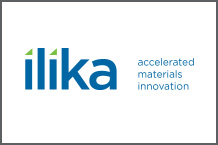|
We are delighted to announce that Parkwalk has closed an investment in Ilika, a specialist provider of solid state batteries and....
|
|
|||||
 |
|
|||||
|
Dear , Ilika spun out of the University of Southampton’s School of Chemistry in 2004 and quickly established a reputation for the rapid development of novel materials, working with a variety of international companies. This work continues today with ongoing programmes with GKN, BAe, Rolls-Royce, Seagate and Johnson Matthey. In 2008 Toyota became its partner for development work on battery materials and out of this work, for which Ilika retained the IP, the company generated its solid state battery technology. The Technology The key to enabling IoT devices to function and to deliver useful information is power. The devices must harvest energy through trickle charging, have low electrolyte leakage, and, in order to minimise maintenance and cost, they must be reliable over multiple charging cycles (which means over many years). And all of this has to be delivered in a small footprint. Solid state battery technology meets these criteria in theory, having long shelf life with limited leakage, charging faster than lithium-ion competitors and being stable across a broad range of conditions. However it has proved difficult to produce Lithium-ion solid state cell stacks in the small footprint required due to manufacturing issues. Ilika’s use of a silicon anode and its production know-how enable it to produce cell stacks with the required power storage and output characteristics. The combination of this technology with the increasing availability of small scale energy harvesting devices, such as photovoltaic cells or vibration harvesters, and ultra-low power electronics means that Ilika can potentially offer devices which meet the needs of the IoT. The Business Model The company intends to license its technology to partners in the semiconductor, MEMS, battery and general industrial arena. The agreements are intended to provide upfront fees and ongoing royalties. The company’s first pilot product is the Stereax M250, which incorporates an ambient light photovoltaic cell, a temperature sensor, chip and Bluetooth transmitter. This is the forerunner of the M Series products, which are aimed at medical wearables and devices. There will be further model lines to meet different technical requirements. The C Series will have higher power output and will be targeted at smart buildings and infrastructure. The P Series will be able to operate at higher ambient temperatures (above 100 C) and will be aimed at transportation applications. The materials and production process are well characterised and are being produced at the company’s pilot production line in Southampton. The products should be readily manufactured by third-party foundries and preliminary discussions have been held with the usual suspects. Growth Opportunity There were an estimated 15bn sensors in existence in 2015 and that number was growing at 20% p.a. (source postscapes), all thanks to the proliferation of devices in the IoT world. Ilika would only have to penetrate a small proportion of that market to have a significant business opportunity. The Team Graeme Purdy, CEO, was a co-founder of Ilika and has led the company through multiple funding rounds and its 2010 AIM listing. Prior to joining the company he had worked in a variety of roles at Shell. Graeme has a Master’s degree in Chemical Engineering from Cambridge and an MBA from INSEAD. Mike Inglis, Chairman, joined the company in July 2015 and became Chairman in September 2015. He is also a NED at Advanced Micro Devices and at BT plc, and at the latter he is also a member of the Technology Committee. Previously Mike was a Director and member of the Executive at ARM Holdings. Professor Brian Hayden, CSO, was a co-founder of Ilika. He is the Professor of Physical Chemistry at the University of Southampton, a Fellow of the Royal Society of Chemistry and a Fellow of the Institute of Physics. Brian has published in excess of 100 papers in the fields of surface science, surface electrochemistry and catalysis. The Investment Case Ilika has a wealth of experience in materials and in working with industrial partners. The battery technology which has emerged is now close to commercialisation in a market which is large and growing rapidly. The addition of the new Chairman has brought renewed focus to the business and we now see multiple development and commercial milestones in the next 18 months, which will propel the company towards long term profitability. The ongoing work in materials development has the potential to generate similar breakthroughs in the future. |
||
|
|||||
|
||
|
|||||

